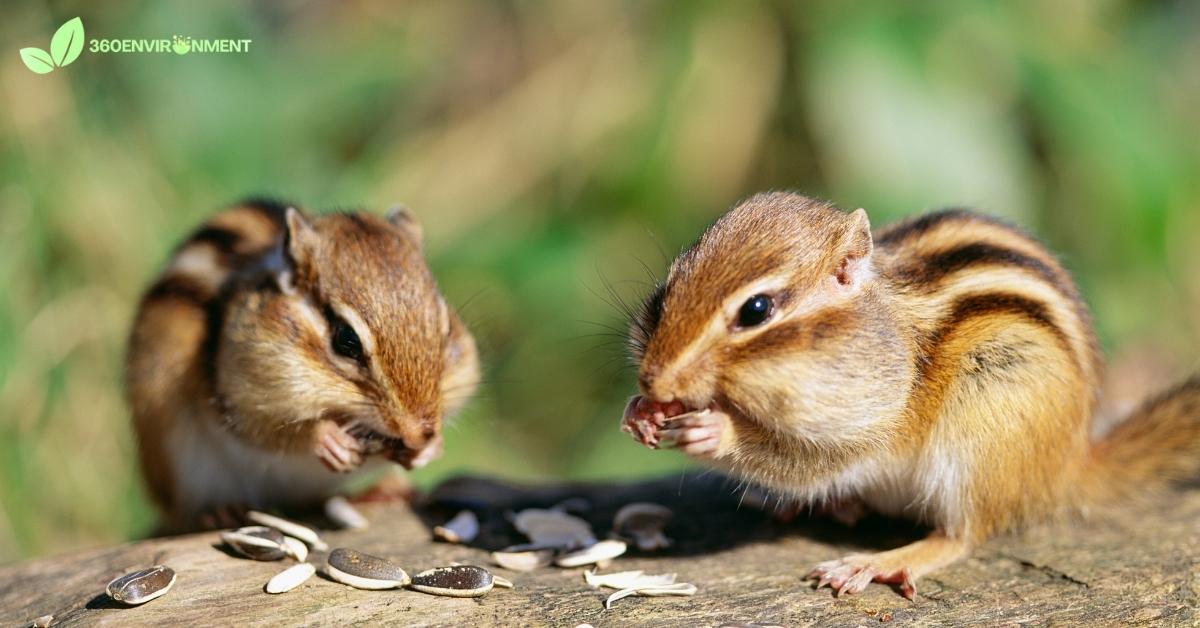Baby chipmunks, also known as pups, are not only adorable creatures, but they also play an essential role in their ecosystems. As members of the Sciuridae family, chipmunks belong to a group of small, ground-dwelling rodents that are integral to forest, woodland, and grassland ecosystems across North America and parts of Asia. While they are most often associated with their lively adult counterparts, baby chipmunks have unique behaviors, growth patterns, and ecological significance that are worth exploring.
In this article, we will delve into the environmental niche of baby chipmunks, examining their development, habitats, feeding behavior, ecological interactions, and their role in biodiversity. Additionally, we will discuss the threats they face and conservation efforts aimed at protecting chipmunk populations.
1. Habitat and Geographic Distribution of Baby Chipmunks
Chipmunks are found primarily in North America, with 25 species native to the continent, and one species, the Siberian chipmunk (Tamias sibiricus), found in Asia. Baby chipmunks are born in nests or burrows in a wide range of habitats, including forests, grasslands, rocky areas, and even suburban or urban environments.
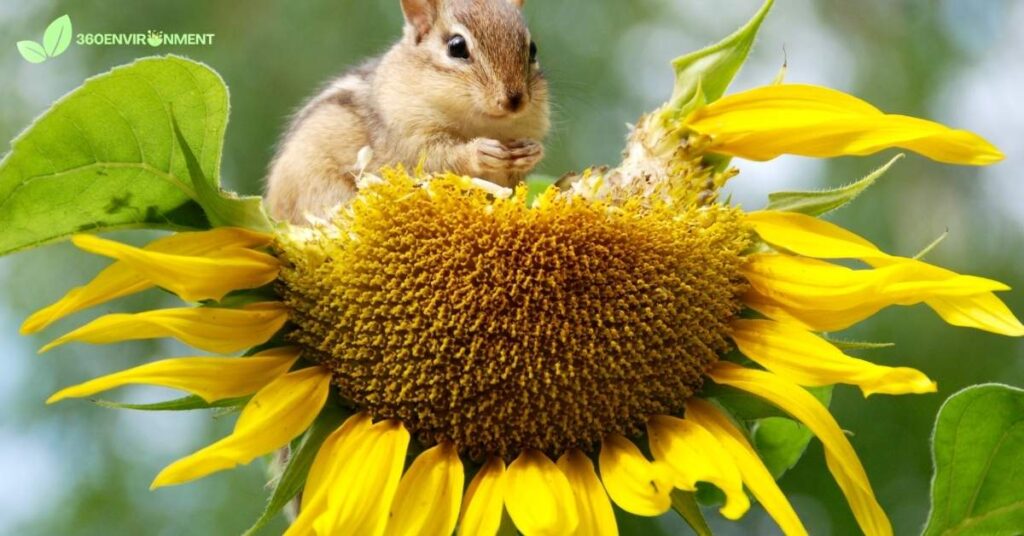
1.1. Forest and Woodland Habitats
Baby chipmunks are most commonly associated with forested environments, where they are born and raised in underground burrows or nests built within hollow trees or logs. These habitats offer plenty of cover and abundant food sources, including nuts, seeds, and fruits, which are essential for chipmunk survival.
- Deciduous Forests: In North America, chipmunks thrive in deciduous forests, where they are often seen darting across the forest floor or climbing trees in search of food. Baby chipmunks benefit from the dense vegetation and leaf litter that provide protection from predators.
- Coniferous Forests: Chipmunks are also found in coniferous forests, particularly in mountainous regions where pine, spruce, and fir trees dominate. These forests provide an abundance of pine nuts and seeds, which are important food sources for both adult and baby chipmunks.
1.2. Grasslands and Meadows
In addition to forested areas, chipmunks can be found in grasslands, meadows, and open fields. These environments provide baby chipmunks with ample opportunities to forage for seeds and small insects, and they often make their burrows in the soft soil of grassy areas.
- Prairies and Open Fields: In regions where forests meet grasslands, chipmunks may build burrows along the edges of meadows or in open fields. These burrows provide protection for baby chipmunks, and the open areas allow them to forage for food while remaining vigilant for predators.
- Suburban Gardens and Parks: Chipmunks have adapted well to human-modified environments, and baby chipmunks can often be found in suburban gardens, parks, and backyards. These areas provide access to food sources such as birdseed, nuts, and garden plants.
1.3. Rocky and Mountainous Regions
Some species of chipmunks, such as the least chipmunk (Tamias minimus), are commonly found in rocky and mountainous regions. These environments offer numerous hiding places for baby chipmunks, as well as a wide variety of food sources.
- Rocky Slopes and Cliffs: In mountainous areas, chipmunks often build their burrows among rocks, where they can quickly retreat from predators. Baby chipmunks are particularly vulnerable in these open environments, but the rocky terrain provides shelter and protection.
- Mountain Meadows: Mountain meadows, which are often located at higher elevations, provide a mix of grasses, wildflowers, and shrubs that serve as food sources for chipmunks. Baby chipmunks in these regions benefit from the diverse plant life and the abundance of seeds and insects.
2. Development and Life Cycle of Baby Chipmunks
The life cycle of a chipmunk begins with the birth of tiny, hairless pups that rely entirely on their mother for warmth, nourishment, and protection. Understanding the early development of baby chipmunks is crucial to appreciating their role in the broader ecosystem.
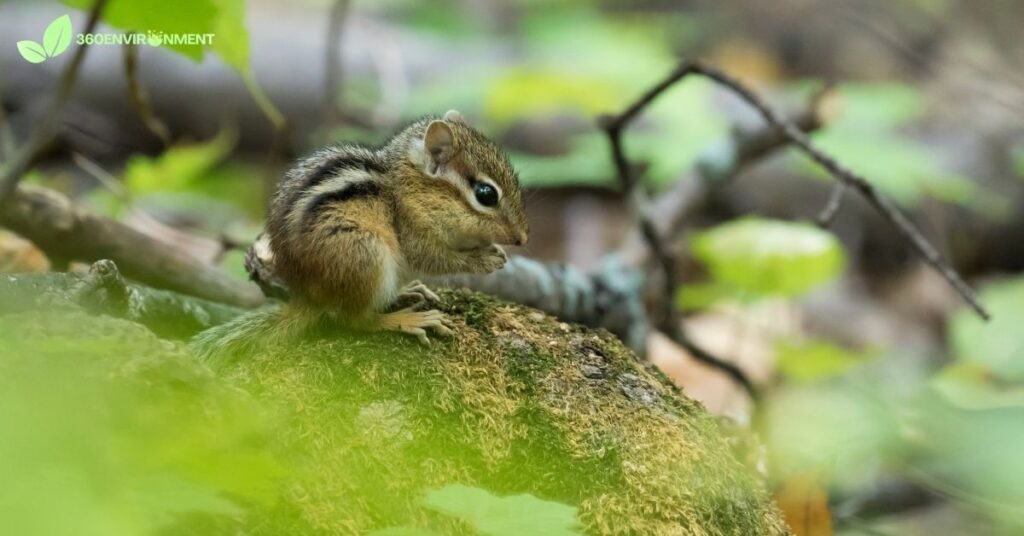
2.1. Birth and Early Development
Baby chipmunks are typically born in early spring or summer, after a gestation period of about 30 days. Female chipmunks give birth to litters of three to five pups, although litter sizes can vary depending on species and environmental conditions.
- Newborn Pups: At birth, baby chipmunks are small and vulnerable, weighing only a few grams. They are born blind, hairless, and completely dependent on their mother for care. During the first few weeks of life, they remain in the safety of the nest or burrow, where they are nursed by their mother.
- Nursing and Growth: Baby chipmunks nurse for about six weeks, during which time they grow rapidly and develop fur. Their eyes open around three weeks of age, and they begin exploring their surroundings under the watchful eye of their mother.
2.2. Learning and Independence
As baby chipmunks mature, they start to exhibit behaviors that are critical for their survival in the wild. This period of learning and exploration is essential for developing the skills needed to find food, avoid predators, and build nests or burrows.
- Weaning and Foraging: By the time they are six to eight weeks old, baby chipmunks are weaned and begin foraging for solid food, such as seeds, nuts, berries, and insects. They practice climbing, digging, and storing food, skills that will be crucial once they leave their mother’s care.
- Developing Nesting and Burrowing Skills: As baby chipmunks grow, they learn how to build and maintain burrows, which provide shelter from predators and harsh weather. Some species, like the Eastern chipmunk (Tamias striatus), dig complex tunnel systems with multiple chambers for food storage, sleeping, and rearing young.
2.3. Transition to Adulthood
By the time baby chipmunks reach three months of age, they are fully independent and capable of surviving on their own. This transition marks the beginning of their adult life, during which they continue to refine their foraging and survival skills.
- Territorial Behavior: As they mature, chipmunks establish territories that they defend from other chipmunks. Baby chipmunks may start off in their mother’s territory, but as they grow older, they will seek out their own space to build a burrow and establish a home range.
- Mating and Reproduction: Chipmunks typically reach sexual maturity at around one year of age. During the breeding season, adult chipmunks engage in mating behaviors that ensure the continuation of the species. Baby chipmunks born in the spring will often reproduce the following year, contributing to the next generation of chipmunks.
3. Ecological Role of Baby Chipmunks
Though small in size, baby chipmunks play a significant ecological role in the ecosystems they inhabit. From their role as seed dispersers to their position in the food web, chipmunks contribute to biodiversity and the health of their environment.
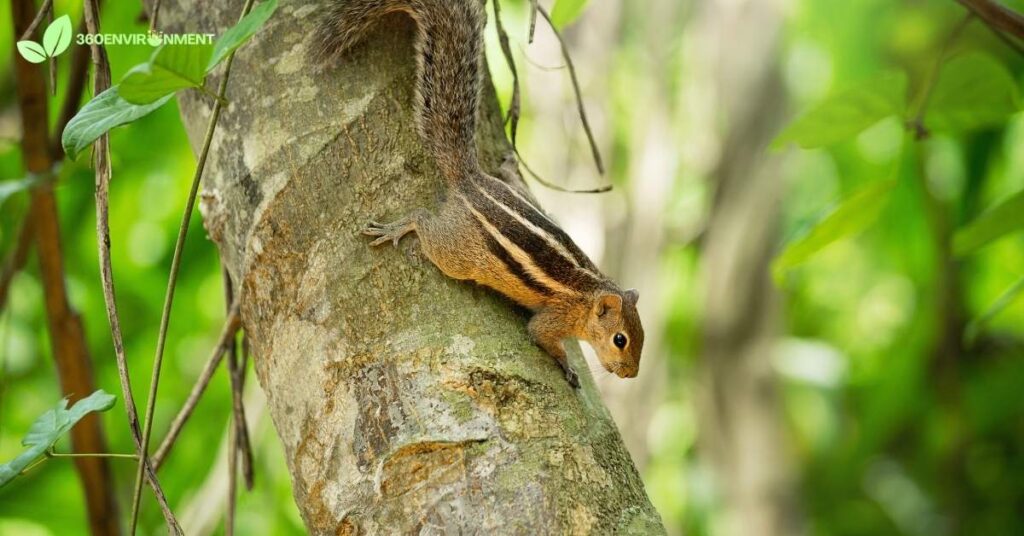
3.1. Seed Dispersal and Plant Regeneration
One of the most important ecological roles of chipmunks, including baby chipmunks, is seed dispersal. As they forage for food, chipmunks gather seeds, nuts, and fruits, which they often cache or store in underground burrows. While some of these food stores are consumed later, many seeds are forgotten or left uneaten, allowing them to germinate and grow into new plants.
- Caching Behavior: Chipmunks are known for their habit of caching food, especially during the fall when they prepare for winter. Baby chipmunks quickly learn this behavior as they begin to forage independently. The seeds and nuts they store can help regenerate forests and grasslands by promoting plant growth and increasing biodiversity.
- Forest and Grassland Health: By dispersing seeds, baby chipmunks help maintain the health of forests and grasslands. Their activities support the regeneration of trees, shrubs, and other plants, which in turn provide habitat and food for a variety of wildlife.
3.2. Prey for Predators
As part of the food web, baby chipmunks serve as prey for a wide range of predators, including birds of prey, mammals, and reptiles. Their role as prey is essential for supporting predator populations and maintaining the balance of the ecosystem.
- Birds of Prey: Raptors such as hawks, owls, and falcons are natural predators of chipmunks. Baby chipmunks, being smaller and less experienced than adults, are particularly vulnerable to predation by these birds.
- Mammalian Predators: Mammals such as foxes, coyotes, weasels, and domestic cats may also prey on baby chipmunks. Their small size and tendency to forage close to the ground make them easy targets for these agile predators.
- Reptilian Predators: Snakes, particularly those that inhabit forested or grassland areas, may hunt baby chipmunks. Species such as garter snakes and rat snakes are known to feed on small rodents, including chipmunks.
3.3. Impact on Soil and Nutrient Cycling
Chipmunks, including baby chipmunks, have a positive impact on soil health and nutrient cycling through their burrowing and foraging activities. As they dig burrows and move soil, they help aerate the soil, improving water infiltration and promoting plant growth.
- Burrowing and Soil Aeration: The act of burrowing allows chipmunks to loosen compacted soil and create spaces for air and water to flow through the ground. This improves soil structure and promotes root growth for plants.
- Nutrient Redistribution: As baby chipmunks forage for food and store seeds and nuts underground, they contribute to the redistribution of nutrients throughout the ecosystem. The seeds they cache may decompose and add organic matter to the soil, enriching its nutrient content.
4. Conservation of Baby Chipmunks
While chipmunks are not currently considered endangered, they face a number of threats that can impact their populations and the ecosystems they inhabit. Conservation efforts aimed at protecting chipmunks and their habitats are essential for maintaining healthy populations and ensuring their role in biodiversity.
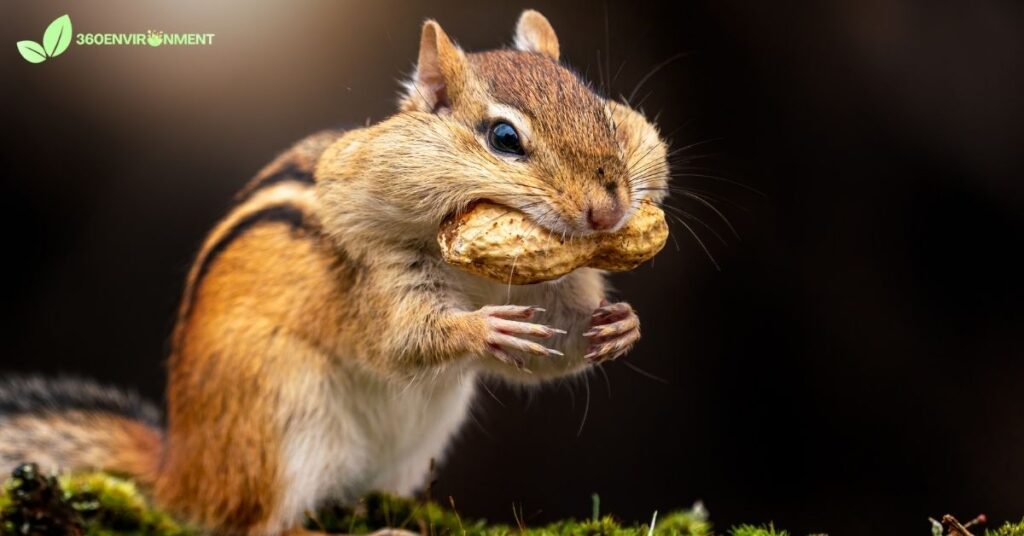
4.1. Habitat Loss and Fragmentation
One of the greatest threats to baby chipmunks is habitat loss and fragmentation caused by urbanization, agriculture, and deforestation. As natural habitats are destroyed or fragmented, chipmunks lose access to the resources they need to survive, such as food, shelter, and nesting sites.
- Urbanization: The expansion of cities and suburban areas has led to the loss of natural habitats for chipmunks. Baby chipmunks that are born in urban environments may face increased risks from traffic, domestic pets, and reduced access to natural food sources.
- Agricultural Development: The conversion of forests and grasslands into agricultural land reduces the availability of suitable habitats for chipmunks. In agricultural areas, the use of pesticides and herbicides can also have negative effects on chipmunk populations by reducing the availability of food and exposing them to toxic chemicals.
4.2. Climate Change and Environmental Stressors
Climate change poses a growing threat to chipmunk populations, as changing temperatures and weather patterns can disrupt their habitats and food sources. Baby chipmunks are particularly vulnerable to these changes, as they rely on stable environmental conditions for their survival and development.
- Shifts in Food Availability: Changes in temperature and precipitation patterns can affect the availability of seeds, nuts, and fruits that chipmunks depend on for food. Baby chipmunks born during times of food scarcity may struggle to find enough to eat, leading to reduced survival rates.
- Extreme Weather Events: Extreme weather events such as droughts, floods, and wildfires can have devastating effects on chipmunk habitats. Baby chipmunks that are born during or immediately after such events may face increased risks of predation, starvation, or habitat destruction.
4.3. Predation and Human Activity
Predation is a natural part of the chipmunk life cycle, but human activities can exacerbate the risks faced by baby chipmunks. Domestic cats, in particular, pose a significant threat to chipmunk populations, especially in urban and suburban areas.
- Impact of Domestic Cats: Cats are skilled hunters and are known to prey on small mammals, including baby chipmunks. In areas where outdoor cats are common, chipmunk populations may suffer from increased predation, leading to population declines.
- Conservation Measures: To protect baby chipmunks from predation, conservationists recommend keeping cats indoors or supervising outdoor time for pets. Additionally, creating chipmunk-friendly habitats with dense vegetation and natural hiding places can help reduce their vulnerability to predators.
5. Promoting Chipmunk Conservation
Efforts to conserve chipmunk populations and protect their habitats are essential for ensuring the continued survival of baby chipmunks and their role in ecosystems. Conservation strategies should focus on habitat preservation, reducing human-wildlife conflicts, and promoting public awareness of the importance of chipmunks in biodiversity.
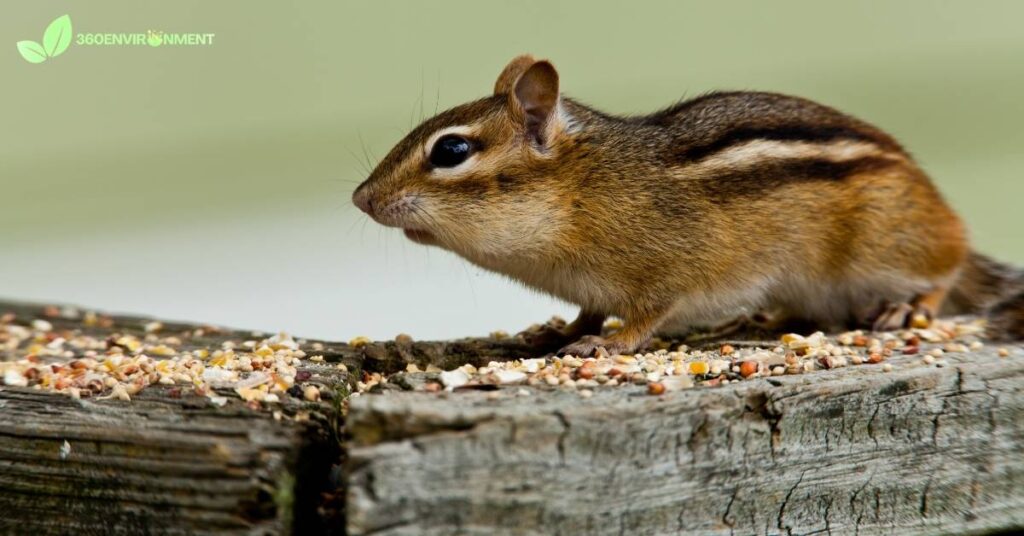
5.1. Habitat Preservation and Restoration
Preserving and restoring natural habitats is one of the most effective ways to protect chipmunks and their ecosystems. By maintaining healthy forests, grasslands, and urban green spaces, we can provide chipmunks with the resources they need to thrive.
- Forest and Grassland Conservation: Protecting large areas of forest and grassland from development and deforestation is crucial for maintaining chipmunk populations. Conservation efforts should focus on preserving habitat corridors that allow chipmunks to move between different areas and find food, shelter, and mates.
- Urban Green Spaces: In urban areas, creating and maintaining green spaces such as parks, gardens, and nature reserves can provide important habitats for chipmunks. These spaces should include native plants that provide food and shelter for chipmunks, as well as safe nesting sites.
5.2. Reducing Human-Wildlife Conflicts
Human-wildlife conflicts can pose significant challenges for chipmunk conservation, particularly in suburban and urban areas. By promoting coexistence with wildlife and reducing sources of conflict, we can help protect chipmunk populations.
- Managing Gardens and Parks: Gardeners and homeowners can support chipmunk conservation by planting native plants that provide food and shelter for chipmunks. Avoiding the use of pesticides and herbicides can also help protect chipmunks from exposure to harmful chemicals.
- Promoting Safe Interactions with Pets: To reduce predation on chipmunks by domestic pets, pet owners should be encouraged to keep cats indoors or supervise them while outside. Creating chipmunk-friendly areas in yards and parks, with dense vegetation and hiding spots, can also help protect chipmunks from predators.
5.3. Public Awareness and Education
Raising public awareness about the importance of chipmunks in ecosystems and the threats they face is essential for promoting conservation efforts. Education campaigns can encourage people to take action to protect chipmunks and their habitats.
- Educational Programs: Schools, nature centers, and conservation organizations can offer educational programs that teach people about the ecological role of chipmunks and the importance of conserving their habitats. These programs can inspire future generations to take an active role in protecting wildlife.
- Citizen Science and Monitoring: Engaging the public in citizen science projects that monitor chipmunk populations can provide valuable data for conservation efforts. By reporting sightings of chipmunks and their behavior, citizens can contribute to a better understanding of chipmunk ecology and the challenges they face.
Conclusion: The Ecological Importance of Baby Chipmunks
Baby chipmunks may be small, but their role in ecosystems is significant. From their contribution to seed dispersal and soil health to their place in the food web, chipmunks are essential for maintaining biodiversity and the health of their habitats. However, chipmunks face numerous threats, including habitat loss, climate change, and predation, which can impact their populations and the ecosystems they support.
By promoting conservation efforts that protect chipmunk habitats, reduce human-wildlife conflicts, and raise public awareness, we can help ensure the continued survival of baby chipmunks and their role in biodiversity. Whether through habitat restoration, responsible pet ownership, or educational programs, everyone can play a part in conserving these charismatic creatures and the ecosystems they call home.
Read More: What Smells Bad in the Forest: Uncovering the Odors in Woodland Ecosystems

